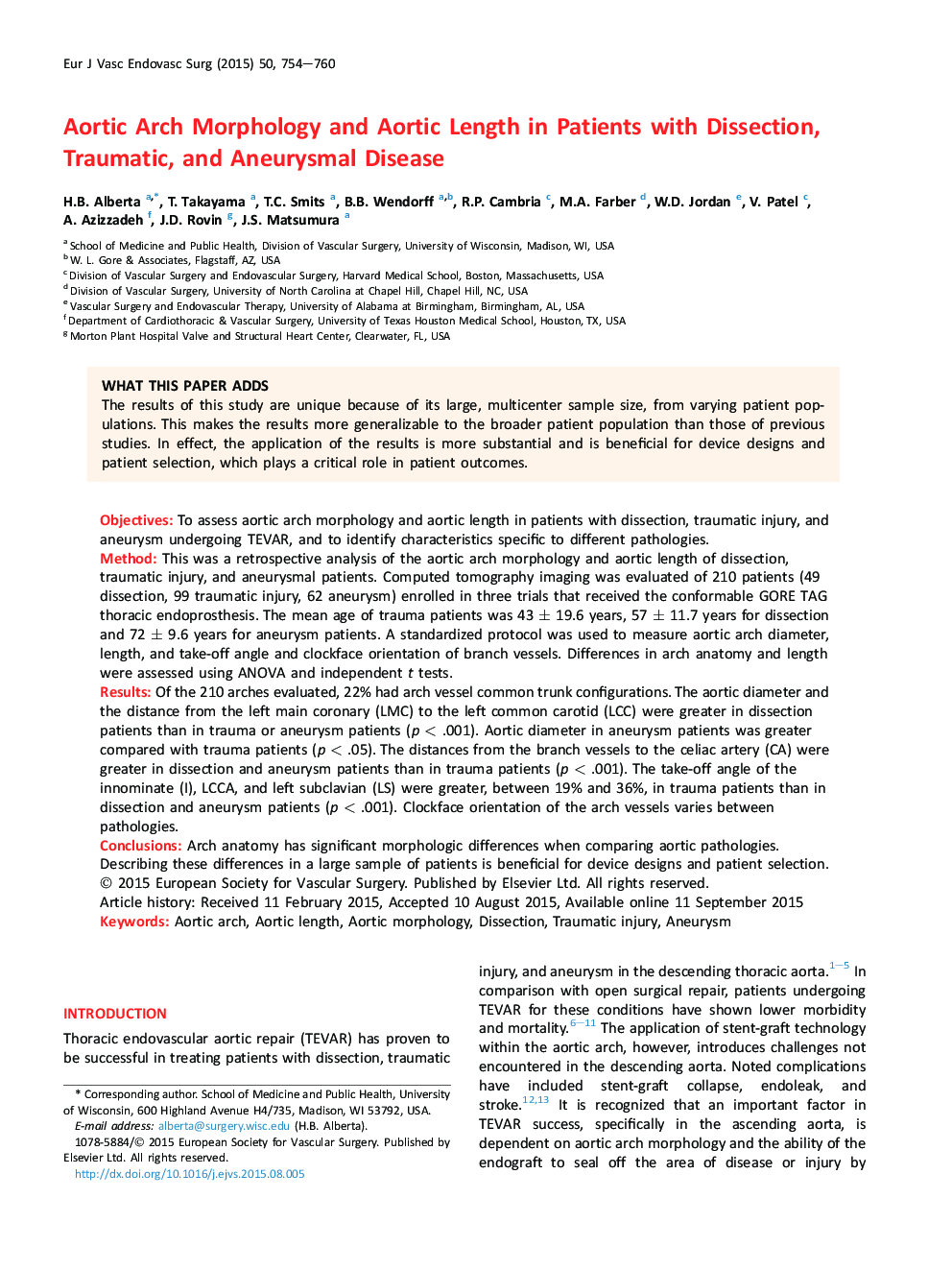| کد مقاله | کد نشریه | سال انتشار | مقاله انگلیسی | نسخه تمام متن |
|---|---|---|---|---|
| 5957424 | 1575435 | 2015 | 7 صفحه PDF | دانلود رایگان |
ObjectivesTo assess aortic arch morphology and aortic length in patients with dissection, traumatic injury, and aneurysm undergoing TEVAR, and to identify characteristics specific to different pathologies.MethodThis was a retrospective analysis of the aortic arch morphology and aortic length of dissection, traumatic injury, and aneurysmal patients. Computed tomography imaging was evaluated of 210 patients (49 dissection, 99 traumatic injury, 62 aneurysm) enrolled in three trials that received the conformable GORE TAG thoracic endoprosthesis. The mean age of trauma patients was 43 ± 19.6 years, 57 ± 11.7 years for dissection and 72 ± 9.6 years for aneurysm patients. A standardized protocol was used to measure aortic arch diameter, length, and take-off angle and clockface orientation of branch vessels. Differences in arch anatomy and length were assessed using ANOVA and independent t tests.ResultsOf the 210 arches evaluated, 22% had arch vessel common trunk configurations. The aortic diameter and the distance from the left main coronary (LMC) to the left common carotid (LCC) were greater in dissection patients than in trauma or aneurysm patients (p < .001). Aortic diameter in aneurysm patients was greater compared with trauma patients (p < .05). The distances from the branch vessels to the celiac artery (CA) were greater in dissection and aneurysm patients than in trauma patients (p < .001). The take-off angle of the innominate (I), LCCA, and left subclavian (LS) were greater, between 19% and 36%, in trauma patients than in dissection and aneurysm patients (p < .001). Clockface orientation of the arch vessels varies between pathologies.ConclusionsArch anatomy has significant morphologic differences when comparing aortic pathologies. Describing these differences in a large sample of patients is beneficial for device designs and patient selection.
Journal: European Journal of Vascular and Endovascular Surgery - Volume 50, Issue 6, December 2015, Pages 754-760
